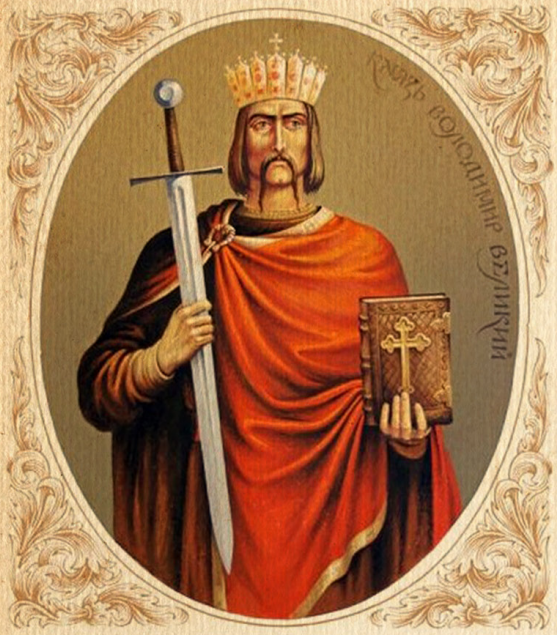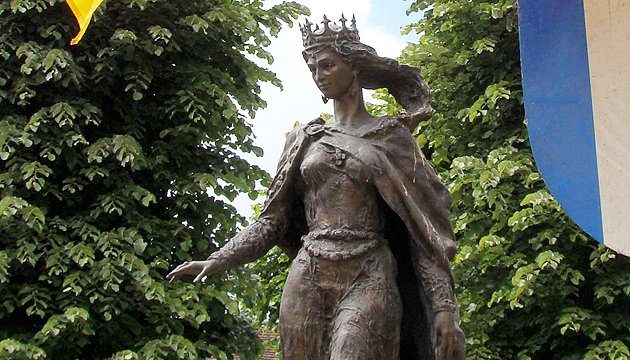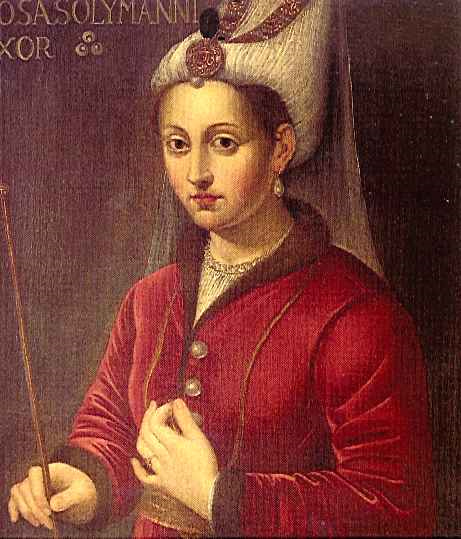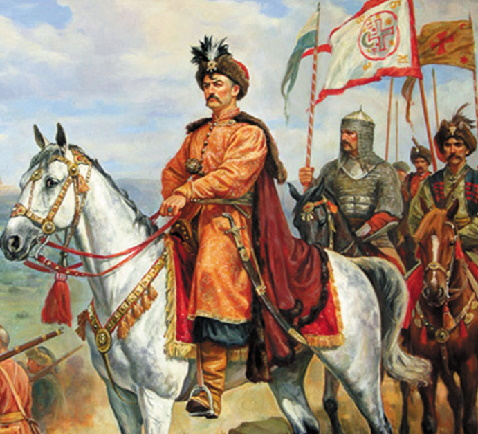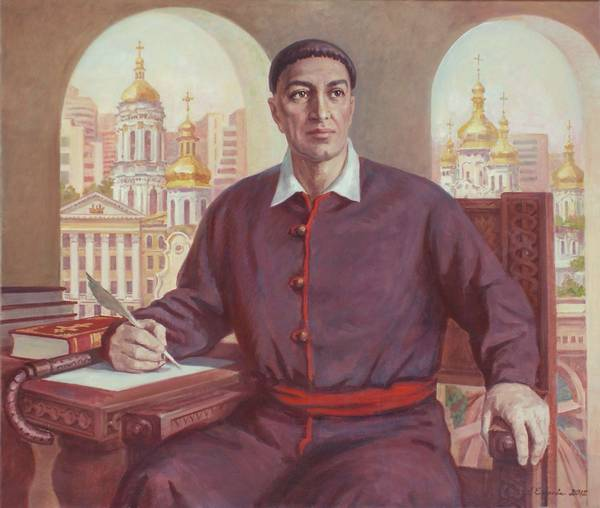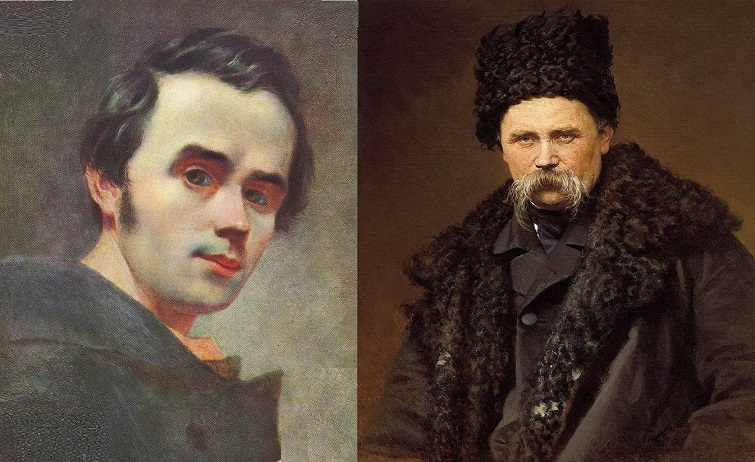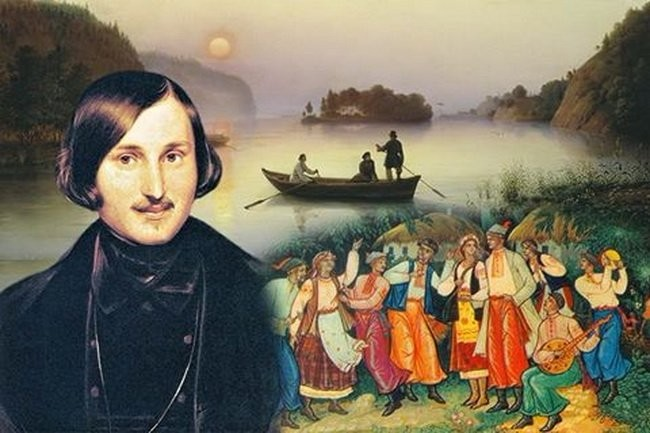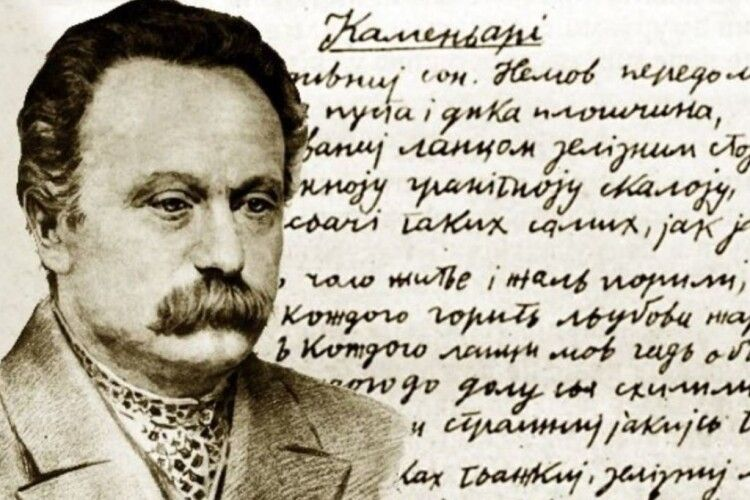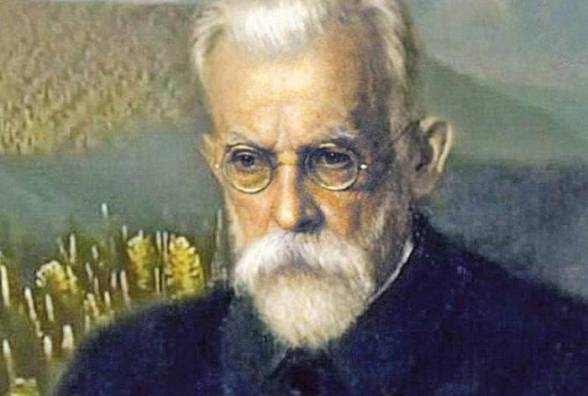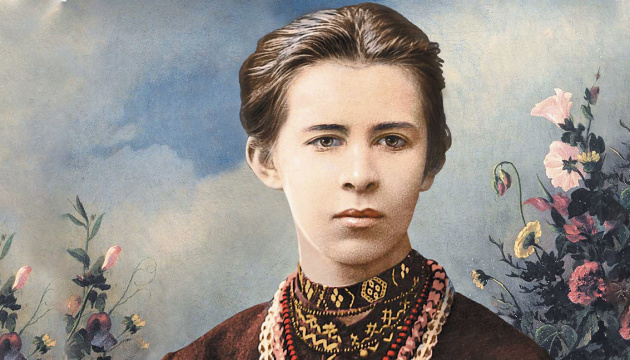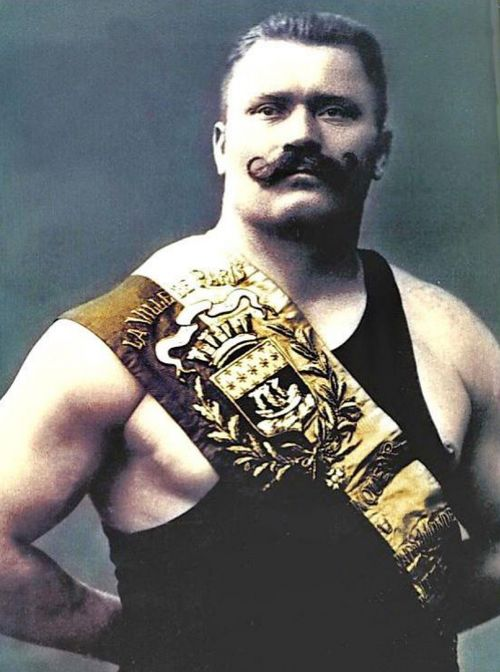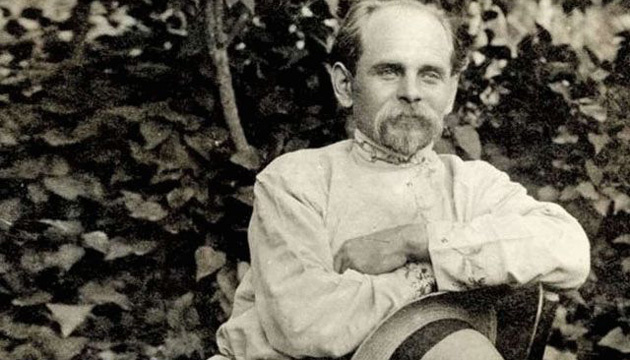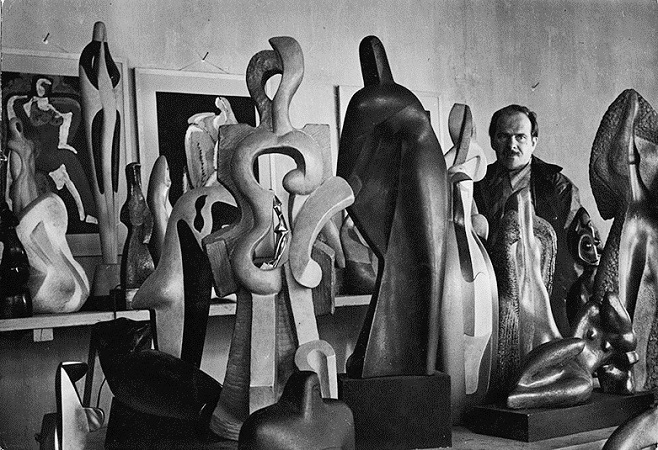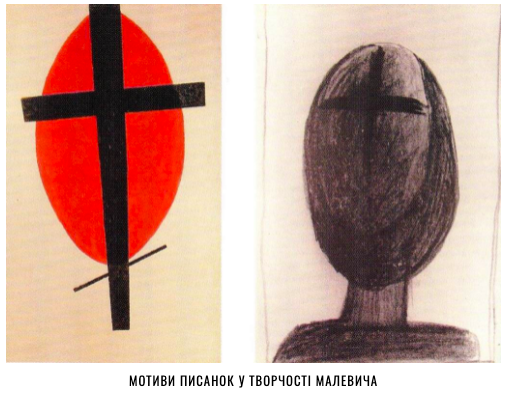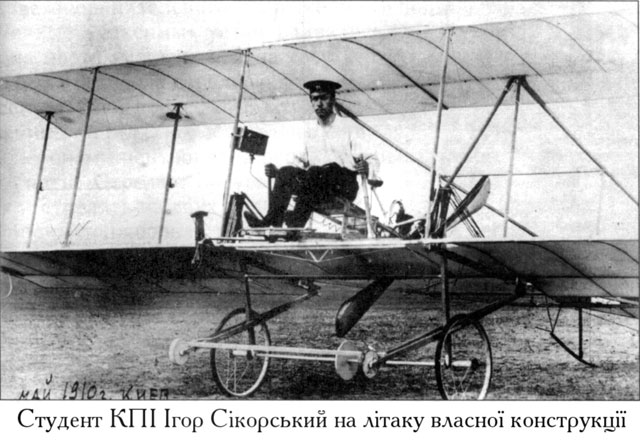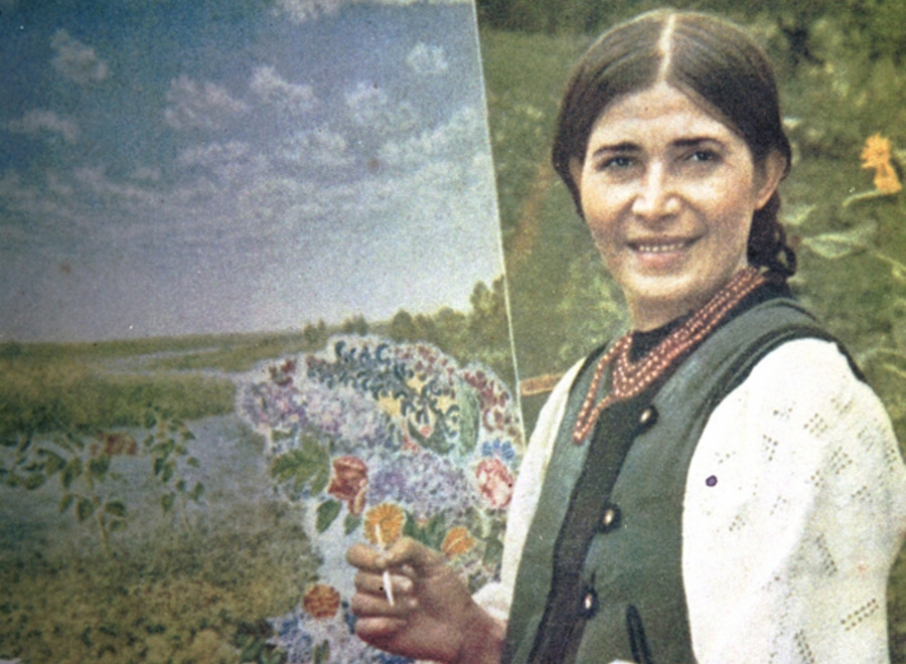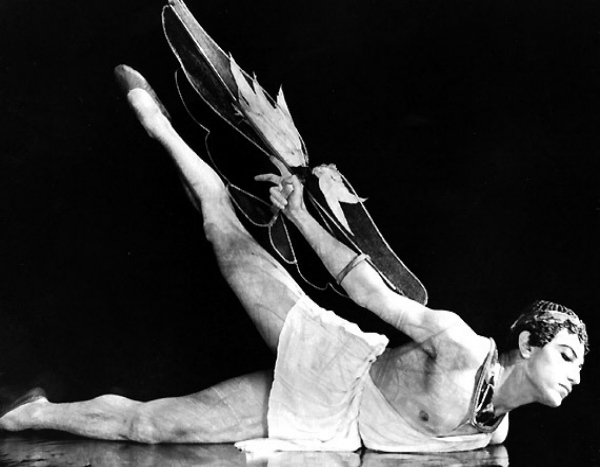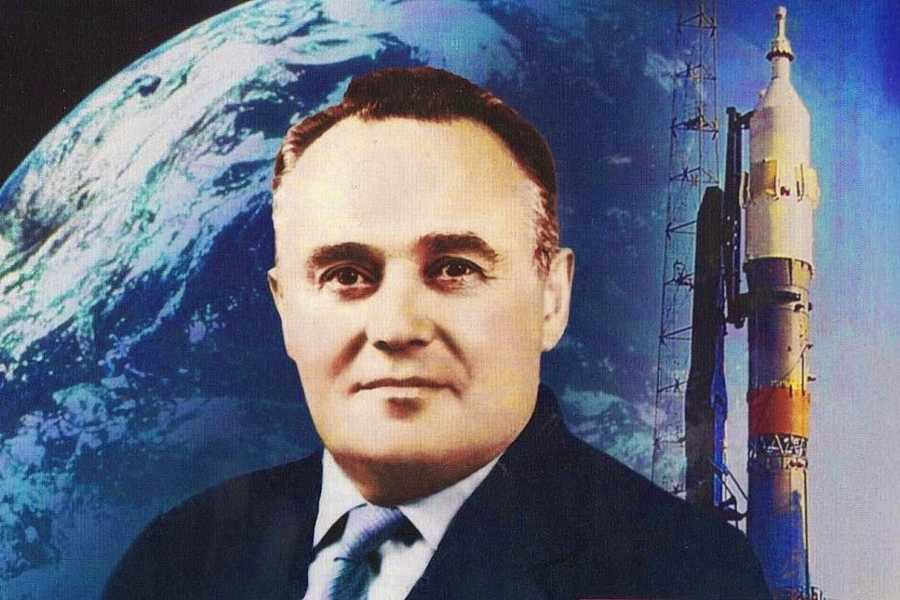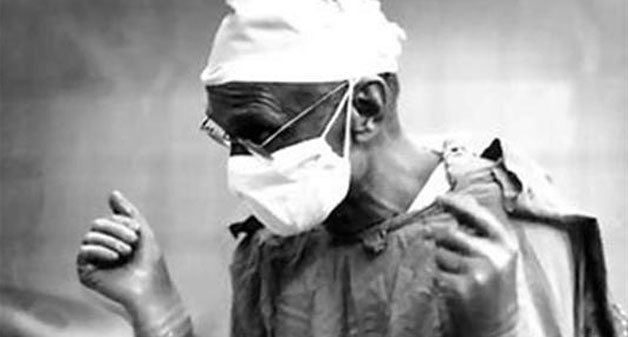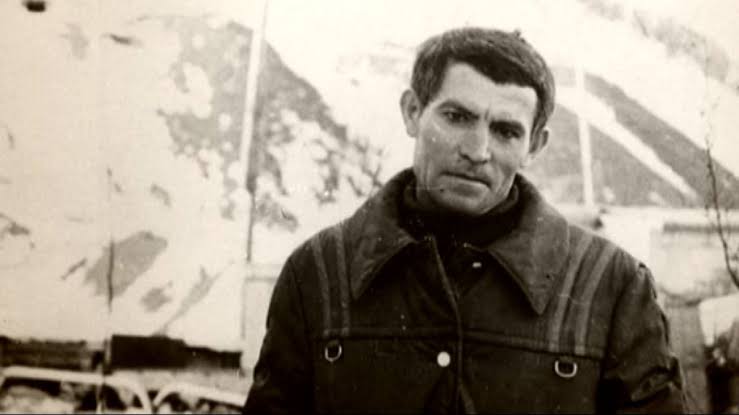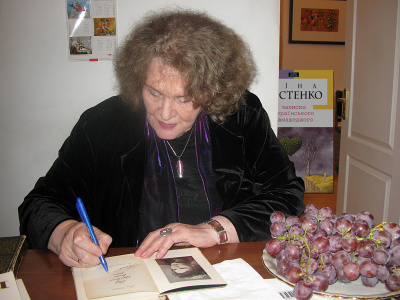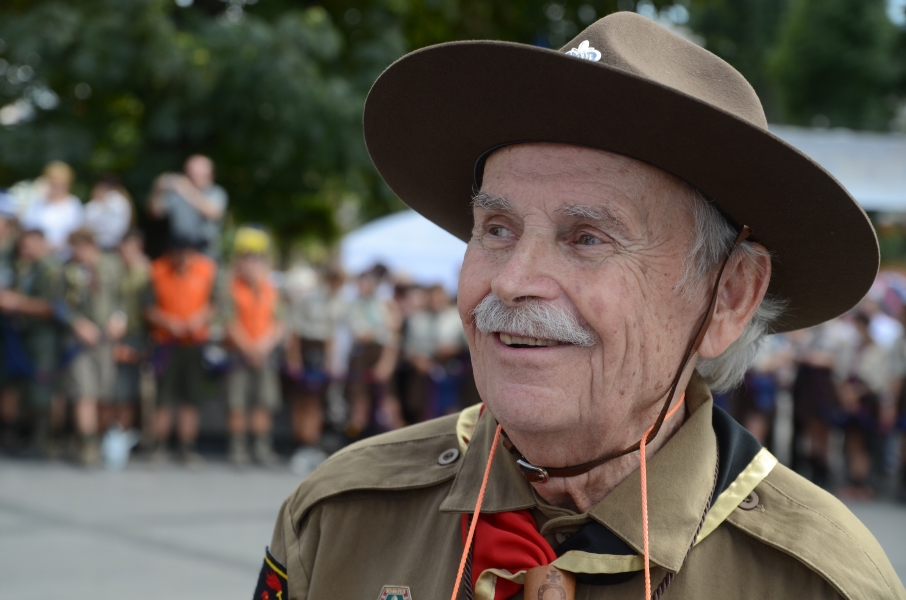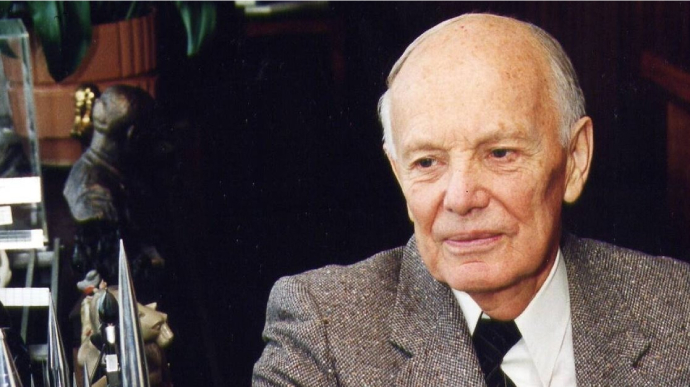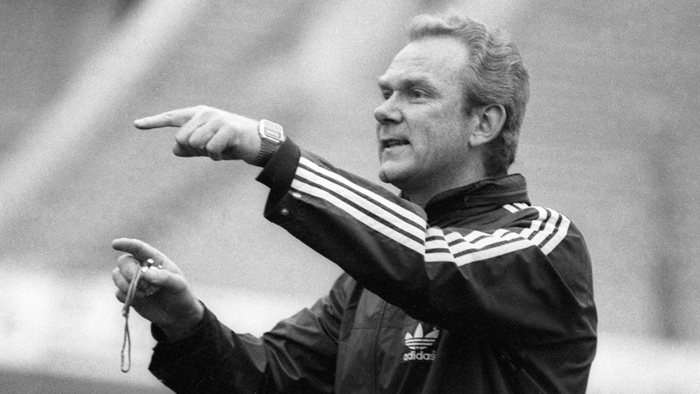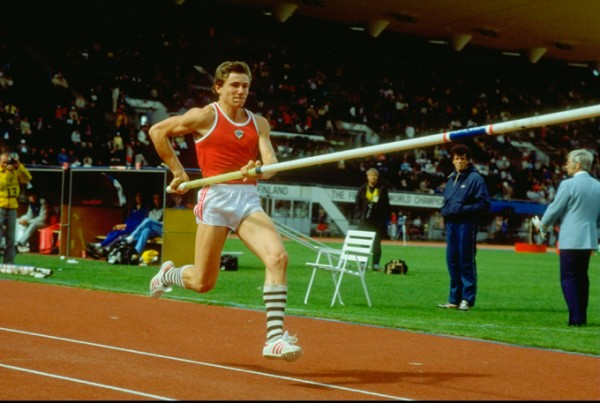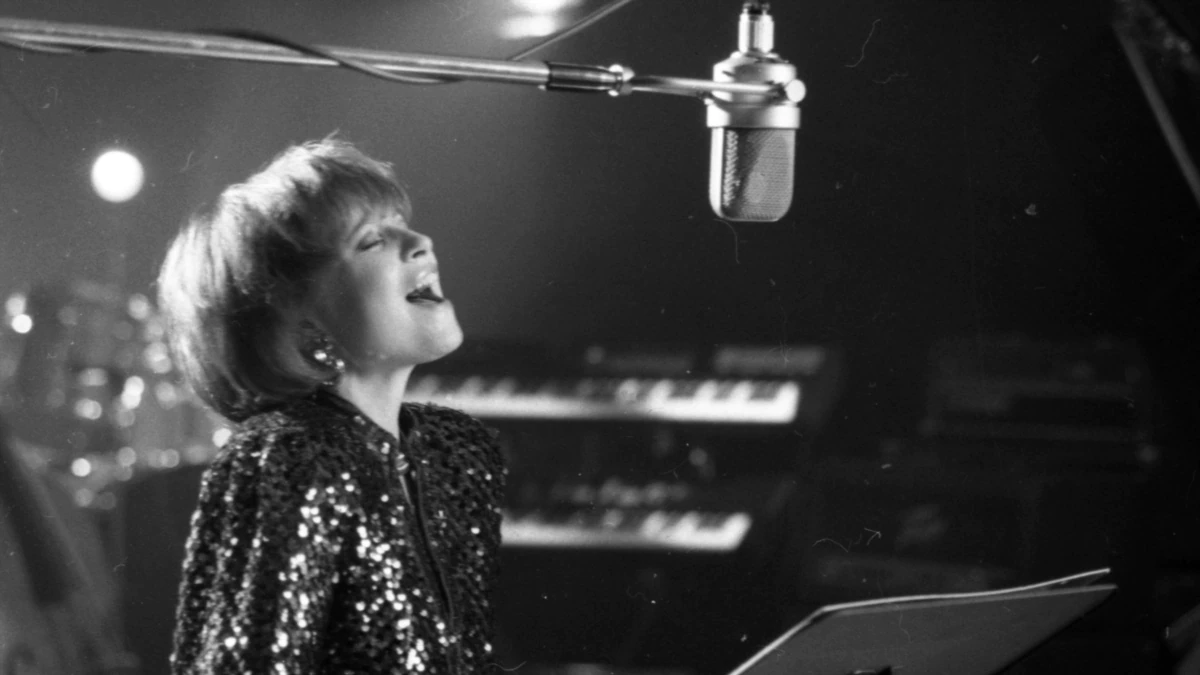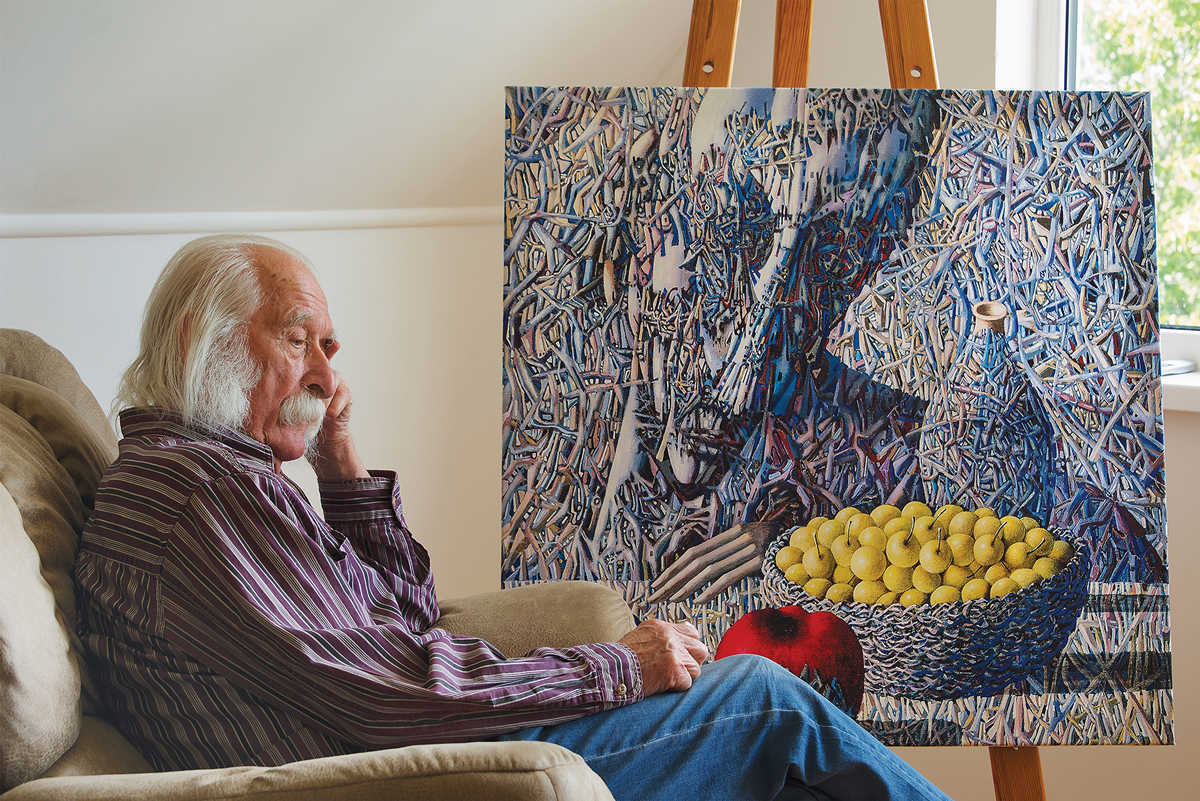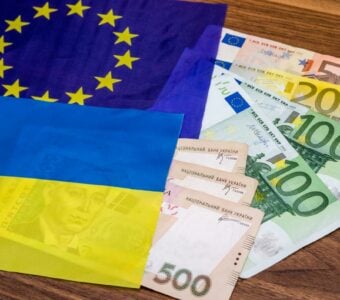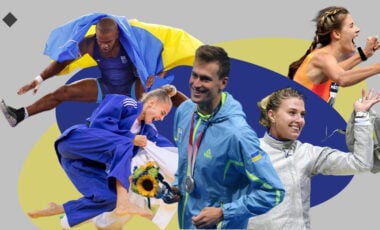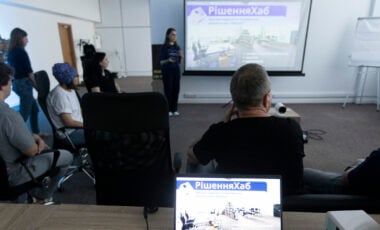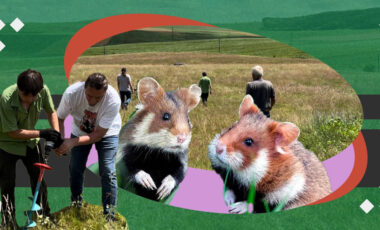Forever moving forward. 28 Ukrainians who changed the world
On the occasion of Constitution Day on June 28, we're talking about prominent Ukrainians who glorify Ukraine all over the world.
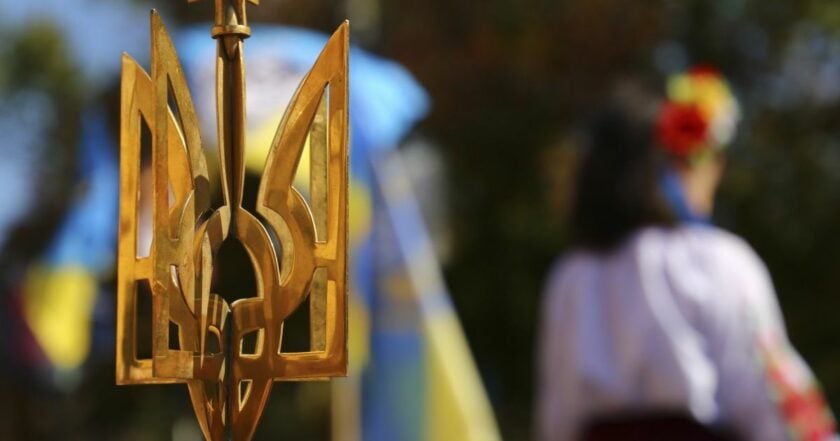
Photo UNIAN
Being a Ukrainian today means moving forward, being active and purposeful, striving to rebuild and defend the native country, learning the Ukrainian language and wanting to speak it, having an interest in Ukraine's cultural heritage, history, and traditions. And also, finally getting rid of the inferiority complex, because Ukraine, which, in fact, has never been on the world's sidelines, has given humanity more than one famous name. Our compatriots influence the course of history, make scientific discoveries, create literary and artistic masterpieces, conquer the world of music and television, outer space, and sports heights.
We talk about famous Ukrainians to compatriots and everyone interested in Ukraine abroad:
1. Volodymyr the Great
Ruler and Baptist of Kyivan Rus' (960/963−July 15, 1015)
Grand Prince of Kyiv, ruler, and baptizer of Kyivan Rus, one of the most prominent state leaders of Ukraine-Rus. Also known as St. Volodymyr, Volodymyr the Baptizer, and Volodymyr the Red Sun. His reign in 980-1015 is considered the beginning of the prosperity of Kyivan Rus, and the prince is called one of the brightest politicians in Europe at that time. He amassed indivisible power, introduced a fresh approach to governing the state, carried out administrative reform, and strengthening the borders of Kyivan Rus also contributed to fortifying the state, raising its status. Prince Volodymyr Sviatoslavych was the first of the Kyivan princes to start minting his own money, and the "trident" symbol depicted on them became the emblem of Ukraine in the 20th century.
2. Anna Yaroslavna (Anna of Kyiv)
Ukrainian princess, queen of France (born about 1032)
The Ukrainian princess, the daughter of the Grand Prince of Kyiv Yaroslav the Wise, is one of the most prominent women of the Middle Ages, who glorified Ukraine throughout Europe. Educated and brilliant Anna, who was fluent in 5 languages, became not only another wife of King Henry I of France and the mother of the future King Philip I, but also a prominent political figure of the time. Queen Anne influenced the foreign and domestic policy of France, was a member of the royal council, took care of churches and monasteries, was the only woman who corresponded with Pope Nicholas II. In European history, Anna Yaroslavna remained the great-grandmother of almost 30 French kings.
3. Roksolana (Hurrem Sultan – "the cheerful one")
Ukrainian queen of the Ottoman Empire (born about 1502)
The Ukrainian queen of the Ottoman Empire, Anastasia Lisovska, the daughter of a priest from the town of Rohatyn in Galicia, entered the history of Turkey under the name of Roksolana and stayed forever. The woman, who went from prisoner to one of the most influential rulers in the world, became the first and the only woman in the history of the Ottoman Empire awarded the official title. Hurrem Haseki Sultan was her husband's adviser in public affairs, received foreign ambassadors, responded to letters from foreign rulers, influential nobles, and artists. She built mosques, schools, caravanserais, and hospitals in Istanbul, Edirne, Jerusalem, Mecca, and Medina at her own expense. She also contributed to her son's, Selim II, accession to the Ottoman throne. Roksolana has been repeatedly praised in literature, fine arts, music, and cinema and is one of the most famous women of ancient and modern Ukraine.
4. Bohdan Khmelnytskyi
Hetman (1595−1657)
Hetman of the Zaporozhian Army, a fighter for the independence of the Ukrainian people, the founder of the first Ukrainian state in history, the Hetmanate. Bohdan Khmelnytskyi, who was born Zinovii, was an educated man: he knew Latin, French and Turkish. Although Khmelnytskyi was educated at a Jesuit school, the future hetman remained faithful to Orthodoxy. Bohdan Khmelnytskyi became famous as a talented military leader, an outstanding reformer, and the founder of Ukrainian statehood. The reign of the legendary hetman (1648-1657) brought Ukraine not only domestic political power but also recognition in the international arena.
5. Hryhorii Skovoroda
Philosopher (1722−1794)
Hryhorii Skovoroda, an outstanding Ukrainian philosopher, theologian, poet, pedagogue, and translator, was perhaps the most interesting figure in the history of the Ukrainian spirit. He extremely valued personal physical and spiritual freedom, so he didn't even bow to the queen. He devoted his philosophical treatises mainly to ethics and considered self-knowledge to be the main meaning of human existence. The mystic traveler was independent and free all his life. They say he could predict fate and knew the exact date of his death. "The world tried to catch me, but didn't manage…": such words are carved on the grave of "Ukrainian Socrates."
6. Taras Shevchenko
Poet, novelist, artist (1814−1861)
National pride, Taras Shevchenko was a man of universal talents and interests. While still alive, the former serf became a recognized poet, prose writer, playwright, artist, politician, and public figure. But most of all, Shevchenko dreamed of a time when his country would be an independent sovereign state when Ukraine's language, culture, and history would be respected, and the people would be united in their actions and thoughts. "Love your Ukraine. Love it… In times of rage. At the last difficult moment, pray to the Lord for it." Today Shevchenko is one of the most published authors in the world. The poet's poems have been translated into more than a hundred languages and even Esperanto. One of Mercury's 300 craters is named after him, and there are almost 1,400 monuments to the Ukrainian genius on Earth in 35 countries.
7. Mykola Hohol
Writer (1809−1852)
The canonical writer, who was born in the Poltava region and wrote in Russian, was able to make hundreds of millions of readers around the world fall in love with Ukraine. No one, before and after Mykola Hohol, spoke so widely, convincingly, fascinatingly, and vividly about Ukrainian life. Although many of the writer's works are associated with St. Petersburg, one of the first places in his work was given to Ukrainian reality, traditions, folklore, and history. In his letters to his mother, who lived in a Ukrainian village, Hohol asked her to tell him about the traditions, rites, and customs of his native people, which he later used actively in his St. Petersburg period. The author's famous works "Taras Bulba," "Myrhorod," "Evenings on a farm near Dykanka" have been translated into almost all languages on the planet. For almost two centuries, the world has known our country, the original character and soul of the Ukrainian people through the work of a brilliant writer with Ukrainian roots.
8. Ivan Franko
Writer, publicist, public figure (1856–1916)
The talented prose writer and playwright, the only Ukrainian poet nominated for the Nobel Prize in Literature, was notable for his tremendous efficiency. In the forty years of his career, Franko has published eleven collections of poetry, more than a hundred short stories, nine short stories, and more than ten plays. He became the first professional Ukrainian writer who didn't have a state job but earned his living by writing. He survived three arrests. After the second (1880) he almost died of starvation, but he didn't give up his views; ten years later he became a co-founder of the first Ukrainian political party, the Ruthenian-Ukrainian Radical Party, and its first chairperson in 1898. Frank's journalistic activity was also fruitful: more than two thousand publications. As an ethnographer, Franko organized a vast amount of folklore, published several important works on the theory of literature, history, Ukraine's economics, and philosophy.
9. Volodymyr Vernadskyi
Natural historian, philosopher (1863−1945)
Volodymyr Vernadskyi became the first president of the Ukrainian Academy of Sciences (UAS), established in 1918 in Kyiv under Hetman Pavlo Skoropadskyi. He headed the Ukrainian Academy of Sciences for three years. During this time, the main institutes of the academy and the scientific library were established, the largest one in present-day Ukraine. Vernadskyi organized many geological expeditions, from the Urals to southern Ukraine, to study natural resources. He was the first in the Russian Empire to draw attention to the need for research into radioactive minerals, so he's considered the ideologist and founder of nuclear energy in Ukraine and Russia.
Volodymyr Vernadskyi is named a scientist-prophet. His ideas were ahead of his time. The pinnacle of Vernadskyi's scientific research is the doctrine of the biosphere as a whole natural system, and of the noosphere, the sphere of influence of the human mind on the surrounding world.
10. Lesia Ukrainka
Poet (1871–1913)
Contemporaries loved Lesia Ukrainka for her thirst for life, and her descendants were left with her work. The poet, given only 42 years of her life by fate, enriched Ukrainian poetry with the absolute perfection of form, a variety of universal themes, and many poetic genres. Her dramatic poems, "Stone Master," "Obsessed," "Cassandra" and others, don't leave theater stages, and the famous drama extravaganza "Forest Song" has become a real classic of Ukrainian literature. Lesia Ukrainka is the only woman in the national culture who discovered the translation art secrets of one of the most outstanding monuments of humanity, the Rigveda. She also translated Heinrich Heine, Adam Mickiewicz, Victor Hugo, and Homer. Despite a serious illness, bone tuberculosis, the fragile woman had a tremendous ability to work and strength of spirit, which became one of the main motives of her lyrics. Lesia Ukrainka put the following idea about herself into Mavka from "Forest Song": "No! I'm alive. I will live forever. I have something in my heart that does not die…"
11. Ivan Piddubnyi
Wrestler, athlete (1871–1949)
A native of the Zaporozhian Cossacks, Ivan Piddubnyi glorified his ancestors all over the planet. An epic hero, wrestler, strongman (he bent iron rods and carried a bandstand with pianos and dancers), the "champion of champions" was a real Ukrainian. The name of Ivan Piddubnyi became a symbol of invincible strength, unique power, and brilliant skill. For 40 years, the strongman from Poltava fought about two thousand fights, the vast majority of which he won. He differed from other wrestlers by fast orientation, excellent coordination of his movements, and incredible strength. He performed in 100 cities of the Russian Empire and 50 foreign countries. When asked about the secret of victories, Piddubnyi replied: "Going on stage, I prayed for Ukraine. That's why he won."
12. Solomia Krushelnytska
Opera singer (1872–1952)
Solomia Krushelnytska received the title of the world's outstanding singer during her lifetime. Viewers in a huge number of European cities admired her opera parts, and Krushelnytska was awarded the title of "Wagnerian diva of the 20th century." Singing on the same stage with a native of a small Ukrainian village was considered a great honor by the most famous performers of the 20th century. In 1904, Krushelnytska saved the famous Madame Butterfly of Giacomo Puccini; after her debut failure on stage, the composer completed the opera and entrusted the main part to the Ukrainian singer. For the second time the work was a tremendous success and since then hasn't left the world stage. Acquaintances of the composer said that the only portrait in Puccini's office was the image of a Ukrainian singer.
13. Mykola Leontovych
Композитор (1877–1921)
The Ukrainian carol "Shchedryk," also known as "Carol of the Bells," is recognized and sung on Christmas on all continents. Today there are over 1000 versions of this popular song. The melody of "Shchedryk" consists of 4 notes, and the words of the song have pagan roots, from the time when the New Year was celebrated in the spring. In total, Leontovych's musical heritage is about 150 works. He published two "Collections of Songs from Podillia" in his own arrangement. In 1917, with the establishment of the Ukrainian People's Republic, Leontovych moved to Kyiv. Here he created his first symphonic works, began to write the opera "On the Mermaid's Easter." But after the Bolsheviks came to power, he returned to his native Vinnytsia region, to Tulchyn, where he founded a music school. In 1921, his life was tragically cut short: a Chekist who asked to spend the night at Leontovych's house robbed him and shot the host. The world learned the name of the composer's killer only in the 1990s, thanks to the opening of archives. The good news is that Shchedryk, edited by Mykola Leontovych, is to be included in the UNESCO list of intangible cultural heritage.
14. Oleksandr Arkhypenko
Sculptor (1887−1964)
Oleksandr Arkhypenko, Ukrainian and American sculptor and artist, is one of the founders of Cubism in sculpture, founder of the art school. He became the first Ukrainian to take part in the Venice Biennale (1920). His name holds a worthy place among such masters of the twentieth century as Matisse, Picasso, Braque, Leger, Malevich. In 1923, Arkhypenko emigrated to the United States. There he received citizenship in 1929 and worked as an artist, sculptor, and decorator. In 1934 he decorated Ukraine's pavilion at the exhibition "Century of Progress" in Chicago. In America, he proved himself as an inventor, creating a device that allows drawings made of plexiglass to move. Advertising billboards with variable images now run on this principle.
15. Kazimir Malevich
Artist (1879–1935)
In his own autobiographical notes, Kazimir Malevich, an avant-garde artist, a prominent figure in the Ukrainian avant-garde, founder of Suprematism, one of the founders of cubo-futurism, educator, art theorist, author of the famous "Black Square," declared himself a Ukrainian. He wrote private letters and notes by hand in Ukrainian, artistically documenting the terrible phenomenon of the Holodomor of the 1930s in Ukraine, which killed 4 to 10 million Ukrainians, not remaining indifferent to the tragedy. Kazimir Malevich was born in Kyiv, but all his life he emphasized that his artistic vision was formed in the Ukrainian countryside. There he helped to paint stoves, smear clay on the floor, paint patterns on the walls. These simple household activities became his guides to great art.
16. Ihor Sikorskyi
Aircraft designer (1889–1972)
An outstanding aircraft designer of Ukrainian origin who worked in the Russian Empire and the United States. Creator of the world's first four-engine aircraft "Russian Knight" (1913), heavy four-engine bomber and passenger aircraft "Ilia Muromets" (1914), transatlantic seaplane (1934), serial r single-propeller helicopter (1942). In the United States, where Sikorskyi moved after the Bolsheviks seized power, he created 17 basic types of aircraft and 18 helicopters. Helicopters designed by Sikorskyi were the first to fly across the Atlantic and Pacific Oceans. There, in 1923, he founded the Sikorsky Aeroengineering Corporation.
17. Kateryna Bilokur
Artist (1900–1961)
Kateryna Bilokur was born into a poor family in the village of Bohdanivka in the Kyiv region. She wasn't sent to school because her family had no clothes or shoes for her. She learned to read and draw on her own. She painted the first paintings on the wall of her house with charcoal. Then she started making brushes from cat hair. Infusions of beets, elderberries, and viburnum served as paints, and a piece of glass or a sleeve of a sweater was a palette. The parents were ashamed of their daughter's studies, tore and burned her drawings. "She'd better get married," her father scolded. The fame came to the artist only at 40, when her first personal exhibition took place in Poltava. Bilokur was finally noticed. Her works took part in exhibitions throughout the USSR, and the largest collection of them is stored in the Kyiv Museum of Ukrainian Decorative Arts. In 1954, at the International Exhibition in Paris, her paintings "Tsar Spike," "Birch" and "Collective Farm Field" were seen by Pablo Picasso. "If we had an artist of this level of skill, we would make the whole world talk about her," he said. Currently, the Ukrainian self-taught artist is considered one of the world's brightest representatives of naïve art.
18. Serge Lifar
Ballet dancer, choreographer (1905−1986)
French choreographer Serge Lifar was born in April 1905 in Kyiv. The Lifar family had deep Cossack roots. One of the most prominent dancers of the twentieth century, Serge Lifar received the titles of "god of dance" and "good genius of ballet" from French critics. Ukrainian Icarus not only conquered the stage and the hearts of the audience as a dancer, but he also founded the Academy of Dance at the Grand Opera, headed the Institute of Choreography and the University of Dance in Paris, staged at the Grand Opera more than 200 ballet performances, raised 11 ballet stars. Pablo Picasso and Marc Chagall dreamed of decorating his performances, and Lifar even refused Salvador Dali to cooperate because of the excessive extravagance of his manner. Until the end of his life, Lifar, who emigrated to the West in the early 1920s, remained a staunch patriot and repeatedly renounced French citizenship. "I'm Ukrainian, and I'm proud of that!" he said.
19. Serhii Koroliov
Designer, founder of cosmonautics (1907–1966)
The beginning of humanity's cosmic era is directly connected with the name of Zhytomyr resident Serhii Koroliov, who launched a scientific and technological revolution that has changed the world beyond recognition in recent decades. The genius that made the first artificial satellite of the Earth, the first human's space flight, the first astronaut into space, the work of orbital stations possible, served time in Stalin's camps on a fabricated case, served 8 years, lost all property (the sentence included confiscation) and teeth, and undermined health. In prison, he designed planes for bread and thin broth under the direction of another talented prisoner, aircraft designer Tupolev. After Gagarin's launch into space, Koroliov wasn't even mentioned in the newspapers. Koroliov was officially rehabilitated in 1957, but his name was kept secret until his death. The public fame that fell on Soviet astronauts never went to the person, called the father of Soviet cosmonautics.
20. Mykola Amosov
Surgeon (1913–2002)
Amosov's name has already become a nickname, and the memory of the eminent doctor has become an integral part of Ukrainian history. Over the years, Mykola Amosov saved hundreds of lives, but moreover, he invented a unique technology that continues to save people today. Few people know Amosov was also a talented inventor, author of many books, and philosopher. He made the first mitral valve prosthesis in the USSR, performed the first operations in Ukraine for heart defects, and was the first in the world to develop and introduce antithrombotic heart valve prostheses. Amosov is the most recognized Ukrainian scientist in the world. His work in cardiac surgery, bio-cybernetics, and tuberculosis treatment have been repeatedly republished in the West, as well as in the United States and Japan.
21. Vasyl Stus
Poet, dissident (1938–1985)
The name of Vasyl Stus, a Ukrainian poet and dissident, for most compatriots, is a symbol of the struggle for national identity, Ukrainian culture, and language in the 1970s and 1980s. During his 47 years, he wrote a huge number of works in verse and prose, translated works of classics of world literature into Ukrainian. A clear pro-Ukrainian position under the USSR totalitarian regime led not only to his expulsion from graduate school but also to two prison terms. The poet spent 13 years of his brief life in Soviet prisons. He was deprived of meetings with relatives, his poems, letters, and manuscripts were confiscated, he was physically abused; the authorities tried morally to destroy him. "In fact, I was convicted of striving for national justice," the repressed poet wrote in July 1976. "My love for the native people, my concern for the crisis of Ukrainian culture were qualified as nationalism." His heart, which belonged to Ukraine until the very end, stopped beating in the dungeon of the Perm-36 colony, where he went on a hunger strike after being banned from writing poems in Ukrainian in his letters to relatives.
22. Lina Kostenko
Poet, writer (born 1930)
The most prominent modern Ukrainian poet Lina Kostenko was born in Rzhyshchev in the Kyiv region in a family of teachers. She made her debut in the constellation of poets of the sixties, but almost immediately became a disgraced author. Her talented uncompromising works were the subject of many years of persecution and prohibition by the Soviet authorities. But despite this, in those years, the poet didn't stop working, in particular on her most famous work today, a novel in verse "Marusia Churai," which was waiting for publication for 6 long years. She also took an active part in political life, publicly opposing the illegal arrests of Ukrainian intellectuals and dissidents. In 1973, because of her public activities, she was included in the "blacklists" of the Central Committee of the Communist Party. Lina Kostenko is the author of more than 20 poetry collections, a historical novel in verse and a poem. The poet's works have been translated into many world languages, and Lina Kostenko's prose novel "Notes of a Ukrainian Madman," published in 2010, almost immediately became a Ukrainian bestseller. The first edition of the novel was 10,000 copies and was sold out in half a month, which set a kind of record for Ukrainian publications. Today Lina Kostenko, poet, publicist, public figure, lives and works in Kyiv.
23. Bohdan Havrylyshyn
Economist (1926−2016)
Famous Ukrainian, Canadian and Swiss economist, Honored Worker of Science and Technology of Ukraine, Citizen of the World, public figure, and philanthropist. During World War II, he was deported to the Third Reich. After 1945 he was in a camp for displaced persons, and in 1947, he left for Canada. There he became a member of Plast, worked as a lumberjack, participated in trade union activities, and studied at the University of Toronto. After obtaining a master's degree in mechanical engineering and working as an engineer and manager, he moved to Switzerland and received a doctorate in economics. It was in Geneva that he headed the prestigious International Institute of Management for many years, and his efforts earned a branch of this university in Kyiv. Among Havrylyshyn's main achievements was the creation of the World Economic Forum in Davos, which became the main platform for communication between big business and world leaders. Bohdan Havrylyshyn wrote many works on economics and management, which are currently studied by students in many countries. At various times he was an adviser to Ukrainian presidents, ministers, and speakers of parliament. Havrylyshyn founded a foundation that prepares a new formation of Ukrainian leaders with European values.
24. Borys Paton
Scientist (1918–2020)
Borys Paton is a peer of the National Academy of Sciences of Ukraine, which he headed for almost 60 years. Hetman Pavlo Skoropadskyi founded the academy in November 1918, the same time the scientist was born. In 2018, Paton and NASU celebrated their centenary. By the way, at one time Borys Paton was offered to head the USSR Academy of Sciences in Moscow, but he refused. The scientist was convinced that he should work in Kyiv. Among the revolutionary technologies created with his participation, there were automatic submerged arc welding, which allowed to create the legendary T-34 tank, electroslag welding, which revolutionized metallurgy and mechanical engineering, the first use of open space welding, and welding of living tissues. The latest innovation was created in independent Ukraine and gained worldwide recognition as an unprecedentedly effective method in surgery.
25. Valerii Lobanovskyi
Football coach (1939–2002)
The achievements of the legendary football player and coach Valerii Lobanovskyi are known not only to football fans. As a player, he is a multiple champion, and winner of the USSR Cup, a silver medalist of the continental championship. As a mentor, he led the USSR team. The backbone was Ukrainian footballers. He led them three times to the title of vice-champions of Europe. With Dynamo Kyiv, he won the Cup Winners' Cup twice (1975, 1986) and the UEFA Super Cup (1975), and the USSR team led by the Ukrainian coach took the "silver" of the 1988 European Championship. In independent Ukraine, Lobanovskyi brought the capital's Dynamo to the peak of form again. His arrival was associated with another rise in Ukrainian football; in 1999, "Dynamo" reached the semifinals of the Champions League, beating Madrid's Real. And the national team of Ukraine made its way to the playoffs of the qualifying tournament for the World Cup in 2002. In addition, Valerii Lobanovskyi completely changed the outdated approach to the training process.
The innovations of the Ukrainian coach (he never received a higher sports education) were appreciated by the whole world: in 2013, Lobanovskyi entered the top ten coaches in the history of football according to the authoritative profile edition, World Soccer.
26. Serhii Bubka
Athlete (born 1963)
The legendary athlete, the first person in the world to jump over six meters, Serhii Bubka remained undefeated at the world championships for fourteen years. During this time, he managed to win six gold medals in the open air and four in the hall, and also to become the winner of the IFFF Grand Prix in the pole vault, the IAAF Grand Prix of all kinds, competitions for the World Cup and the European Cup. Interestingly, every year the jumper added a couple of centimeters to his number. And thus he reached phenomenal records. Bubka was recognized three times as the best athlete in the world and even entered the Guinness Book of Records as the most titled athlete in the world.
27. Kvitka Tsisyk
Singer (1953–1998)
Her voice has been heard at least once by more than 20 billion people, which is three times the world's population. Kvitka Tsisyk is an American opera and blues singer, a popular performer of advertising jingles for TV and radio in the United States, a performer of Ukrainian folk and popular songs, and the owner of a mystical voice that enchants and heals. During the war in 1944, Kvitoslava's young parents left Lviv and hid from the Germans and the Soviet authorities for a long time. Finally, in 1949, they arrived in the United States. Dad started teaching Kvitka music when the girl was only 5 years old.
Volodymyr Tsisyk, a well-known Ukrainian violin virtuoso, taught his daughter to play the violin, but her love of singing overcame her. It was Tsisyk who performed the Oscar-winning song "You Shine My Life" in 1978, and in 1998, the singer was named the most recognizable voice in the United States. Kvitka visited her historical homeland secretly only once in 1983, but she loved Ukraine very much and sang about it with all her heart. "I dreamed that I would be heard in Ukraine," she said.
28. Ivan Marchuk
Artist (born 1936)
The world-famous People's Artist of Ukraine, inventor of his own artistic style, winner of the Taras Shevchenko National Prize of Ukraine, member of the Golden Guild of the Roman Academy of Contemporary Art, Ivan Marchuk began painting as a child and developing his talent in adolescence. It was then that he clearly understood that he wanted to become an artist. However, as the artist mentioned, he had nothing to draw with: no pencils, no watercolors, nothing: "There were flowers. If I drew something in color, I painted with those flowers and petals." The artist's absence of realization in the conditions of Soviet totalitarianism forced him to leave the USSR in the late 1980s. Since then, the artist has managed to live in Australia, Canada, and the United States, from where he finally returned to Ukraine in 2011. Unlike many emigrant artists who were forced to do business abroad, Marchuk not only didn't give up painting but also gained worldwide recognition abroad; he became the only Ukrainian, included in the ranking of "100 most outstanding geniuses of today," concluded by the British newspaper The Daily Telegraph.


